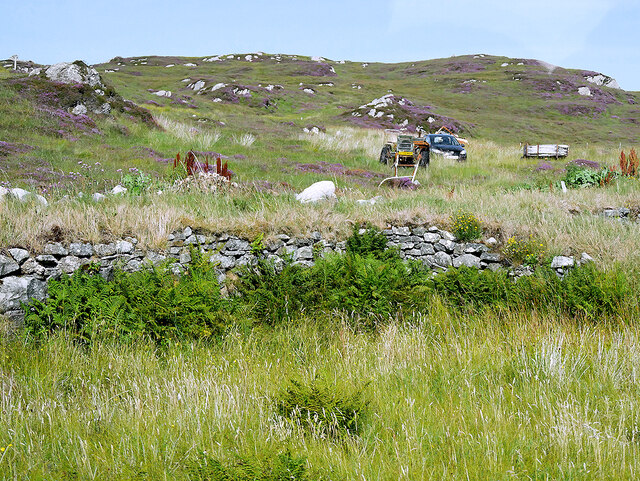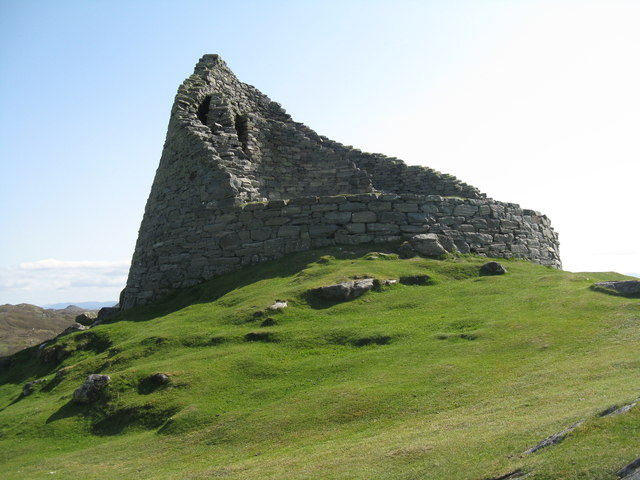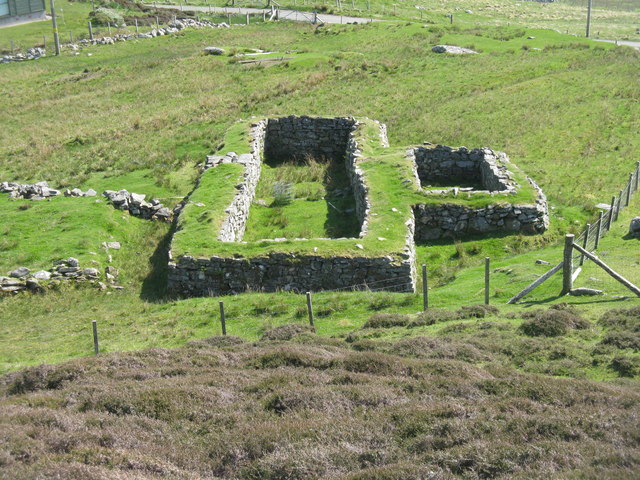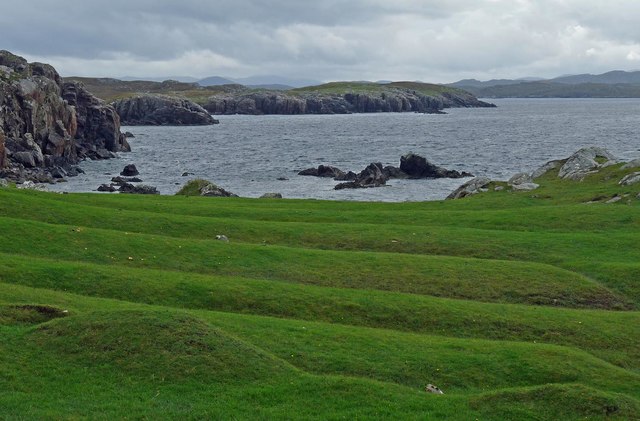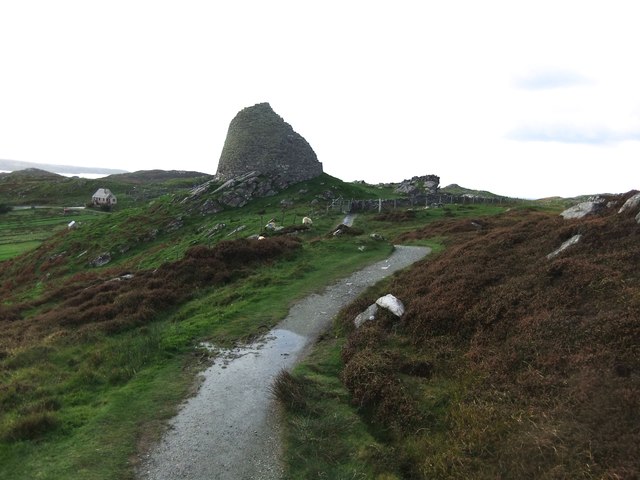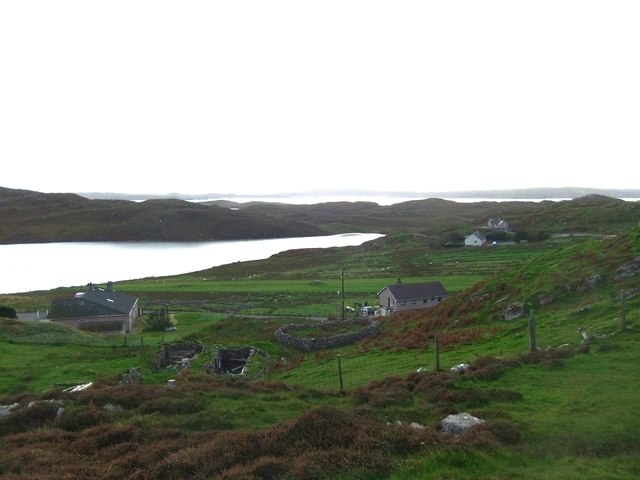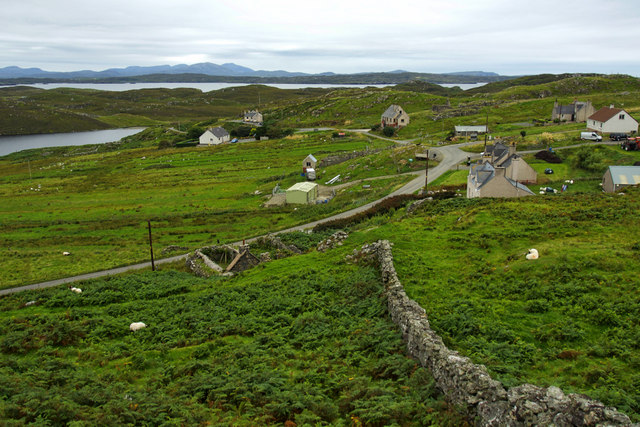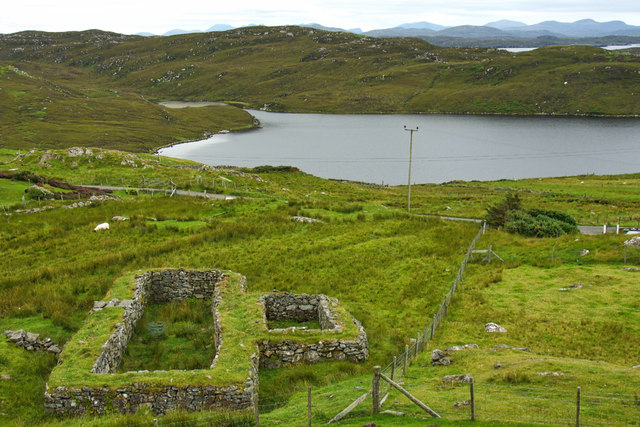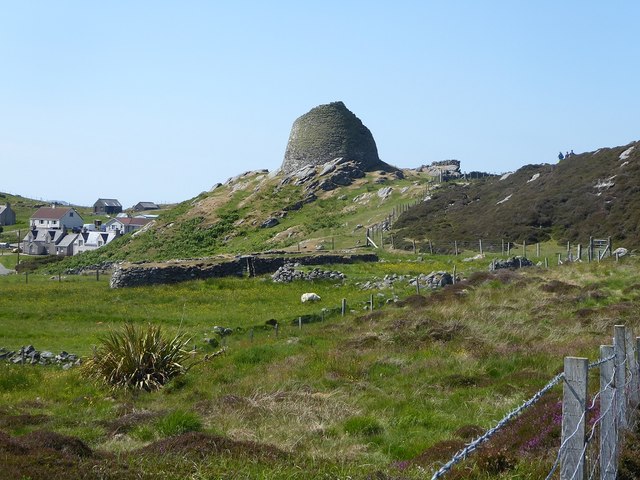Rubha Thòl
Coastal Feature, Headland, Point in Ross-shire
Scotland
Rubha Thòl
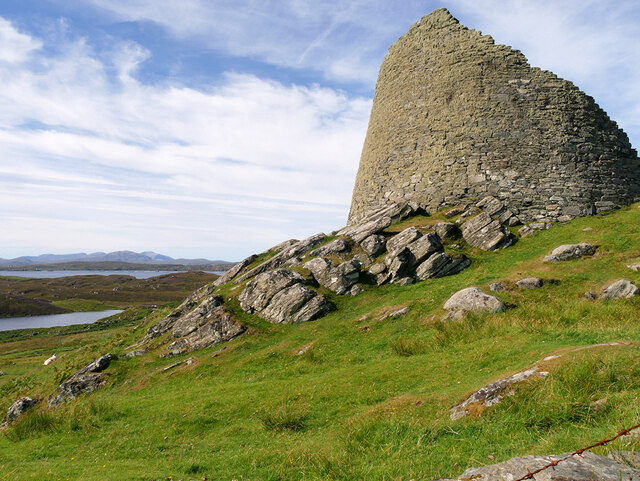
Rubha Thòl is a prominent headland located in Ross-shire, Scotland. This coastal feature is situated on the western coast of the Scottish Highlands, overlooking the North Atlantic Ocean. Offering breathtaking views, Rubha Thòl is known for its rugged cliffs, rocky terrain, and picturesque landscapes.
The headland is characterized by its distinctive shape, jutting out into the ocean, forming a prominent point that separates two beautiful bays. The headland is covered in lush green vegetation, with grassy slopes leading down to the cliffs. These cliffs, composed of weathered sandstone and shale, stand tall, providing a natural barrier against the relentless waves crashing against them.
The waters surrounding Rubha Thòl are teeming with marine life, making it an ideal spot for wildlife enthusiasts and birdwatchers. Seals, dolphins, and various species of seabirds can often be spotted in the vicinity. The headland also offers opportunities for coastal walks, providing visitors with an opportunity to explore the rugged coastline and appreciate the natural beauty of the area.
Rubha Thòl has historical significance as well, with remnants of ancient settlements and archaeological sites scattered across the headland. These remains offer a glimpse into the past, providing insights into the lives of those who once inhabited this coastal region.
Overall, Rubha Thòl is a captivating coastal feature, offering a unique combination of natural beauty, wildlife, and historical significance. It is a must-visit destination for those seeking to immerse themselves in the stunning landscapes of the Scottish Highlands.
If you have any feedback on the listing, please let us know in the comments section below.
Rubha Thòl Images
Images are sourced within 2km of 58.268098/-6.8153636 or Grid Reference NB1741. Thanks to Geograph Open Source API. All images are credited.

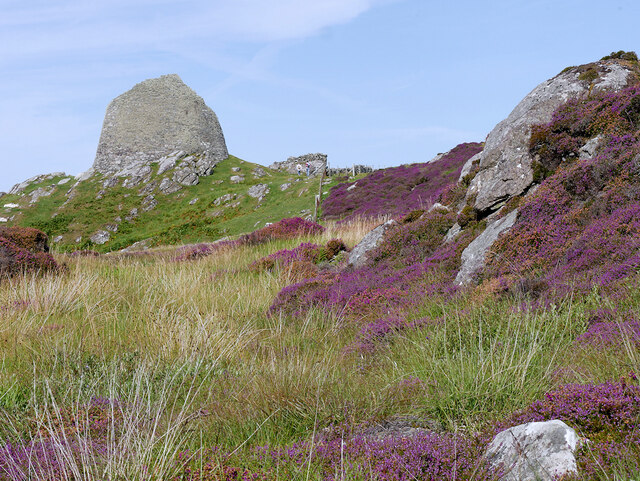
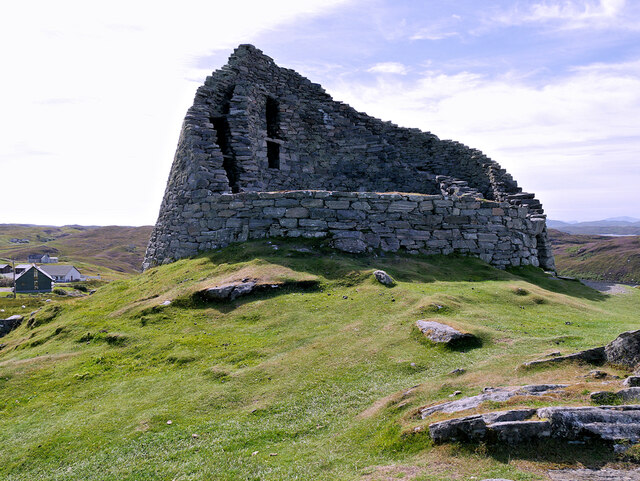
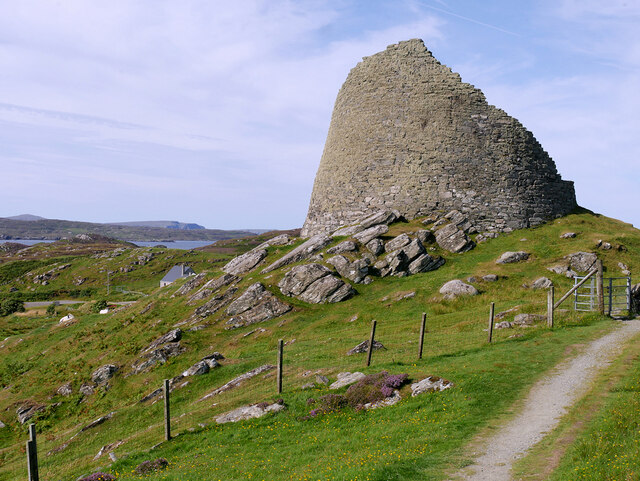
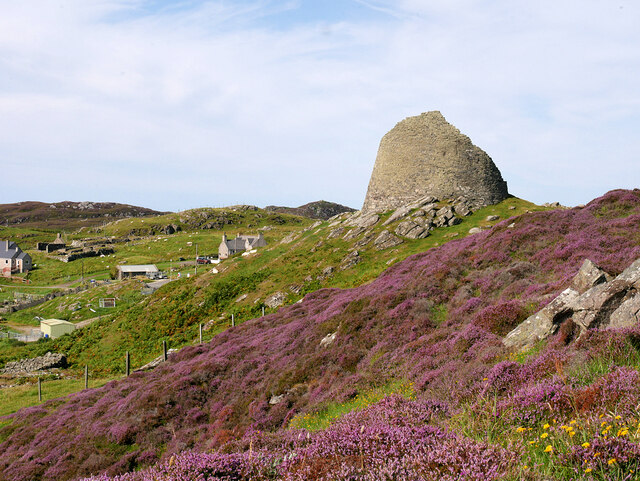
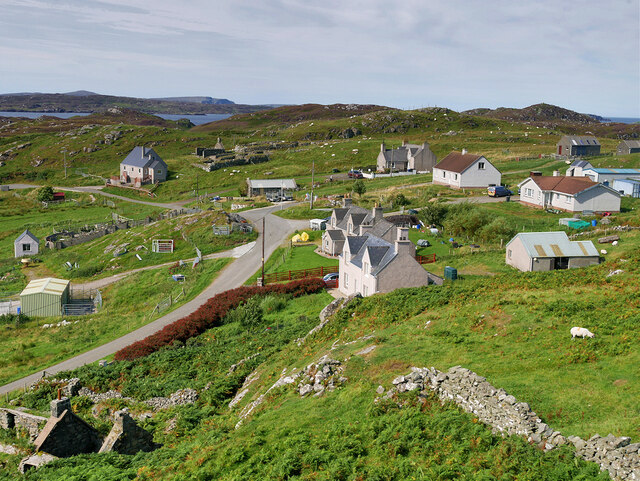
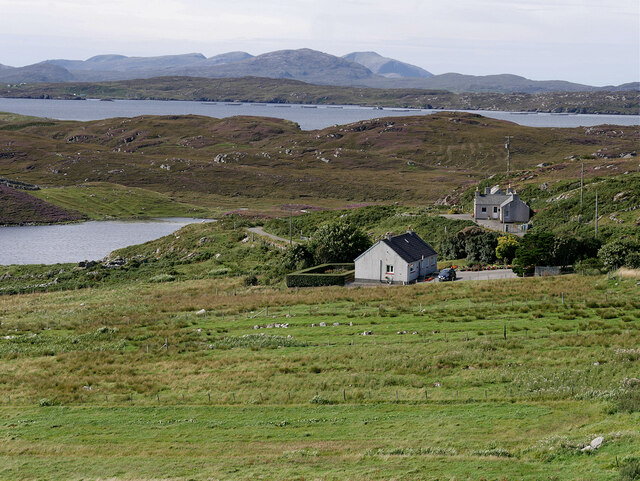
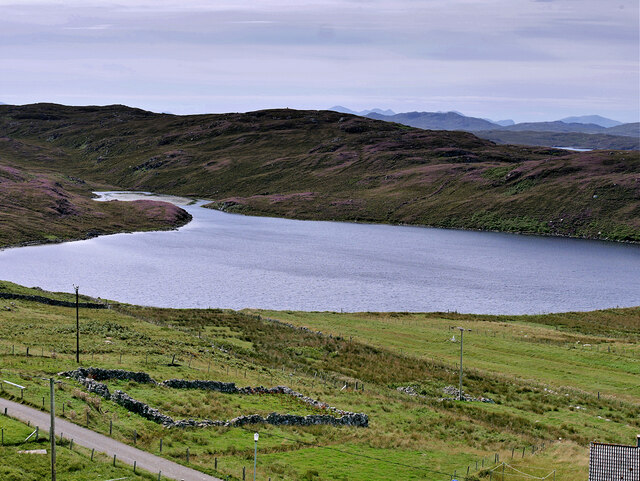
Rubha Thòl is located at Grid Ref: NB1741 (Lat: 58.268098, Lng: -6.8153636)
Unitary Authority: Na h-Eileanan an Iar
Police Authority: Highlands and Islands
What 3 Words
///shipyards.trail.headliner. Near Carloway, Na h-Eileanan Siar
Nearby Locations
Related Wikis
Dun Carloway
Dun Carloway (Scottish Gaelic: Dùn Chàrlabhaigh) is a broch situated in the district of Carloway, on the west coast of the Isle of Lewis, Scotland (grid...
Borrowston, Lewis
Borrowston (Scottish Gaelic: Borghastan), with a population of about 50, is a crofting township situated on the Isle of Lewis, on the Outer Hebrides of...
Cealasaigh
Cealasaigh or Kealasay is an islet in outer Loch Ròg, Lewis, Scotland that lies north of Traigh Mhór on Little Bernera and south of Campaigh. To the west...
Carloway
Carloway (Scottish Gaelic: Càrlabhagh [ˈkʰaːɾɫ̪ə.ɤː]) is a crofting township and a district on the west coast of the Isle of Lewis, in the Outer Hebrides...
Garenin
Garenin (Scottish Gaelic: Na Gearrannan) is a crofting township on the west coast of the Isle of Lewis in the Outer Hebrides of Scotland. Garenin is in...
Little Bernera
Little Bernera (Scottish Gaelic: Beàrnaraigh Beag) is a small island situated off the west coast of the Isle of Lewis in the Outer Hebrides.Little Bernera...
Tolsta Chaolais
Tolsta Chaolais (also Tolastadh Chaolais, Tolstadh a' Chaolais) is a village on the Isle of Lewis, Scotland. It consists of about forty houses, clustered...
Campaigh
Campaigh or Campay is a steep and rocky islet in outer Loch Ròg, Lewis, Scotland that lies north of Cealasaigh and Little Bernera. A huge natural arch...
Nearby Amenities
Located within 500m of 58.268098,-6.8153636Have you been to Rubha Thòl?
Leave your review of Rubha Thòl below (or comments, questions and feedback).
